- Clone
- TX56 (See other available formats)
- Regulatory Status
- RUO
- Other Names
- PVR (poliovirus receptor) homolog
- Isotype
- Rat IgG2a, κ
- Barcode Sequence
- TAGCTTGGGATTAAG
| Cat # | Size | Price | Quantity Check Availability | ||
|---|---|---|---|---|---|
| 131535 | 10 µg | $369.00 | |||
Mouse CD155, also known as homolog of polivirus receptor (PVR), is the founding member of a subfamily of immunoglobulin-like adhesion receptors (nectins). Mouse CD155 is expressed on a wide variety of cells of hematopoietic origin apart from its existence on the epithelial cells. The engagement of CD155 with CD226 and CD96 induces cytotoxicity of NK cells and CTL.
Product Details
- Verified Reactivity
- Mouse
- Antibody Type
- Monoclonal
- Host Species
- Rat
- Immunogen
- CD155 transfectants
- Formulation
- Phosphate-buffered solution, pH 7.2, containing 0.09% sodium azide and EDTA
- Preparation
- The antibody was purified by chromatography and conjugated with TotalSeq™-B oligomer under optimal conditions.
- Concentration
- 0.5 mg/mL
- Storage & Handling
- The antibody solution should be stored undiluted between 2°C and 8°C. Do not freeze.
- Application
-
PG - Quality tested
- Recommended Usage
-
Each lot of this antibody is quality control tested by immunofluorescent staining with flow cytometric analysis and the oligomer sequence is confirmed by sequencing. TotalSeq™-B antibodies are compatible with 10x Genomics Single Cell Gene Expression Solutions.
To maximize performance, it is strongly recommended that the reagent be titrated for each application, and that you centrifuge the antibody dilution before adding to the cells at 14,000xg at 2 - 8°C for 10 minutes. Carefully pipette out the liquid avoiding the bottom of the tube and add to the cell suspension. For Proteogenomics analysis, the suggested starting amount of this reagent for titration is ≤ 1.0 µg per million cells in 100 µL volume. Refer to the corresponding TotalSeq™ protocol for specific staining instructions.
Buyer is solely responsible for determining whether Buyer has all intellectual property rights that are necessary for Buyer's intended uses of the BioLegend TotalSeq™ products. For example, for any technology platform Buyer uses with TotalSeq™, it is Buyer's sole responsibility to determine whether it has all necessary third party intellectual property rights to use that platform and TotalSeq™ with that platform. - Additional Product Notes
-
TotalSeq™ reagents are designed to profile protein levels at a single cell level following an optimized protocol similar to the CITE-seq workflow. A compatible single cell device (e.g. 10x Genomics Chromium System and Reagents) and sequencer (e.g. Illumina analyzers) are required. Please contact technical support for more information, or visit biolegend.com/totalseq.
The barcode flanking sequences are GTGACTGGAGTTCAGACGTGTGCTCTTCCGATCTNNNNNNNNNN (PCR handle), and NNNNNNNNNGCTTTAAGGCCGGTCCTAGC*A*A (capture sequence). N represents either randomly selected A, C, G, or T, and * indicates a phosphorothioated bond, to prevent nuclease degradation.
View more applications data for this product in our Scientific Poster Library. -
Application References
(PubMed link indicates BioLegend citation) -
- Tahara-Hanaoka S, et al. 2004. Int. Immunol. 16:533.
- Maier MK, et al. 2007. Eur. J. Immunol.. 37:2214.
- Bottino C, et al. 2003. J. Exp. Med. 198:557.
- Dressel R, et al. 2010. FASEB J. 9:134. PubMed
- RRID
-
AB_3068257 (BioLegend Cat. No. 131535)
Antigen Details
- Structure
- 70 kd immunoglobulin-like molecule with three Ig-like domains.
- Distribution
-
CD155 is expressed at cell junctions on the primary vascular endothelial cells. Moreover, mouse CD155 is highly expressed on DP thymocytes and expression level is dropped in peripheral single positive CD4+ and CD8+ T cells. CD155 can be detected on T reg, other activated T cells and on NKT cells. Resident monocytes express moderate amount of CD155, but upregulated its expression during inflammation. Other cells, such as IEL, neutrophils and subsets of B cells were found to express CD155 to varying extents.
- Function
- Apart from its function of adhering junction among contacting epithelial cells, the interaction of DNAM-1 (CD226) with its ligands CD155 and CD112 (nectin 2) induces cytotoxcity of NK cells and CD8+ T cells and cytokine secretion.
- Ligand/Receptor
- CD226 (DNAM-1), CD96
- Cell Type
- B cells, Endothelial cells, Neutrophils, Thymocytes, Tregs
- Biology Area
- Immunology
- Molecular Family
- Adhesion Molecules, CD Molecules, Immune Checkpoint Receptors
- Antigen References
-
1. Mendelsohn C, et al. 1989. Cell 56:855.
- Gene ID
- 52118 View all products for this Gene ID
- UniProt
- View information about CD155 on UniProt.org
Other Formats
View All CD155 Reagents Request Custom Conjugation| Description | Clone | Applications |
|---|---|---|
| Biotin anti-mouse CD155 (PVR) | TX56 | FC |
| PE anti-mouse CD155 (PVR) | TX56 | FC |
| Purified anti-mouse CD155 (PVR) | TX56 | FC |
| APC anti-mouse CD155 (PVR) | TX56 | FC |
| PE/Cyanine7 anti-mouse CD155 (PVR) | TX56 | FC |
| PerCP/Cyanine5.5 anti-mouse CD155 (PVR) | TX56 | FC |
| PE/Dazzle™ 594 anti-mouse CD155 (PVR) | TX56 | FC |
| Brilliant Violet 711™ anti-mouse CD155 (PVR) | TX56 | FC |
| Brilliant Violet 605™ anti-mouse CD155 (PVR) | TX56 | FC |
| Brilliant Violet 421™ anti-mouse CD155 (PVR) | TX56 | FC |
| Brilliant Violet 650™ anti-mouse CD155 (PVR) | TX56 | FC |
| Brilliant Violet 510™ anti-mouse CD155 (PVR) | TX56 | FC |
| Brilliant Violet 785™ anti-mouse CD155 (PVR) | TX56 | FC |
| Alexa Fluor® 647 anti-mouse CD155 (PVR) | TX56 | FC |
| TotalSeq™-A1011 anti-mouse CD155 (PVR) | TX56 | PG |
| TotalSeq™-C1011 anti-mouse CD155 (PVR) | TX56 | PG |
| TotalSeq™-B1011 anti-mouse CD155 (PVR) | TX56 | PG |
Compare Data Across All Formats
This data display is provided for general comparisons between formats.
Your actual data may vary due to variations in samples, target cells, instruments and their settings, staining conditions, and other factors.
If you need assistance with selecting the best format contact our expert technical support team.
-
Biotin anti-mouse CD155 (PVR)
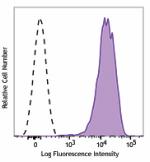
C57BL/6 mouse thymocytes were stained with biotinylated CD15... -
PE anti-mouse CD155 (PVR)

C57BL/6 thymocytes stained with TX56 PE -
Purified anti-mouse CD155 (PVR)
-
APC anti-mouse CD155 (PVR)
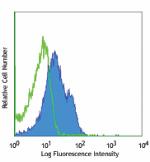
C57BL/6 splenocytes stained with TX56 APC 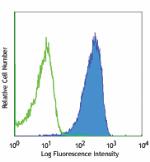
C57BL/6 thymocytes stained with TX56 APC -
PE/Cyanine7 anti-mouse CD155 (PVR)

C57BL/6 thymocytes were stained with CD155 (clone TX56) PE/C... -
PerCP/Cyanine5.5 anti-mouse CD155 (PVR)
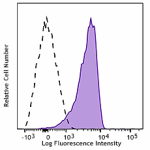
C57BL/6 thymocytes were stained with CD155 (clone TX56) PerC... -
PE/Dazzle™ 594 anti-mouse CD155 (PVR)
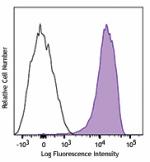
C57BL/6 mouse thymocytes were stained with CD155 (clone TX56... -
Brilliant Violet 711™ anti-mouse CD155 (PVR)
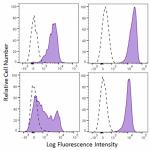
C57BL/6 thymocytes were stained with anti-mouse CD4 (clone G... -
Brilliant Violet 605™ anti-mouse CD155 (PVR)
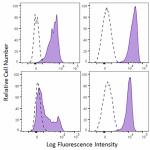
C57BL/6 thymocytes were stained with anti-mouse CD4 (clone G... -
Brilliant Violet 421™ anti-mouse CD155 (PVR)
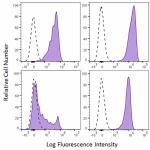
C57BL/6 thymocytes were stained with anti-mouse CD4 (clone G... -
Brilliant Violet 650™ anti-mouse CD155 (PVR)
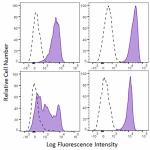
C57BL/6 thymocytes were stained with anti-mouse CD4 (clone G... -
Brilliant Violet 510™ anti-mouse CD155 (PVR)
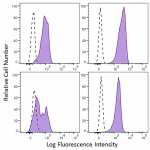
C57CL/6 thymocytes were stained with anti-mouse CD4 (clone G... -
Brilliant Violet 785™ anti-mouse CD155 (PVR)
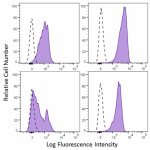
C57CL/6 thymocytes were stained with anti-mouse CD4 (clone G... -
Alexa Fluor® 647 anti-mouse CD155 (PVR)
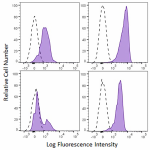
C57CL/6 thymocytes were stained with anti-mouse CD4 (clone G... -
TotalSeq™-A1011 anti-mouse CD155 (PVR)
-
TotalSeq™-C1011 anti-mouse CD155 (PVR)
-
TotalSeq™-B1011 anti-mouse CD155 (PVR)
